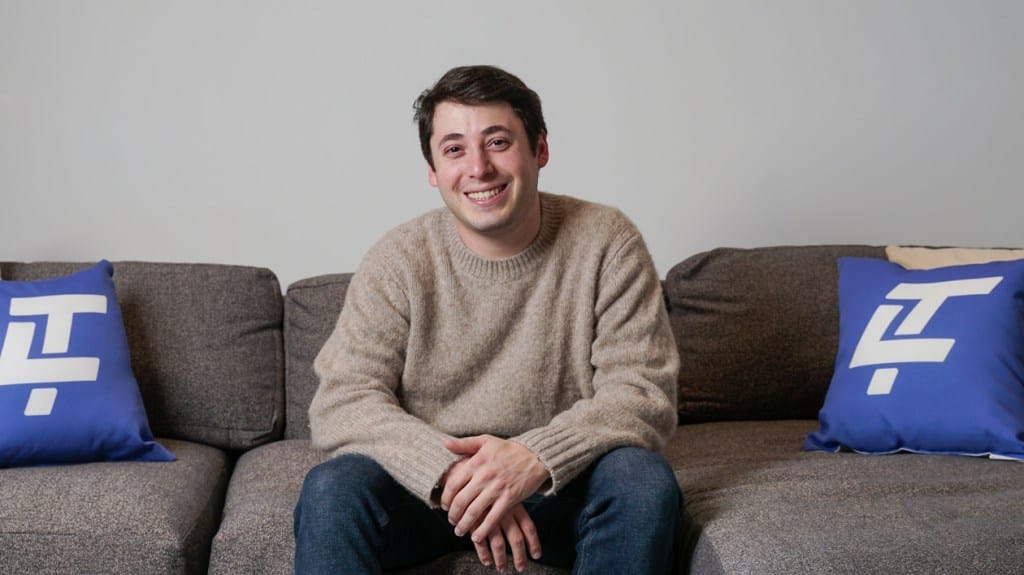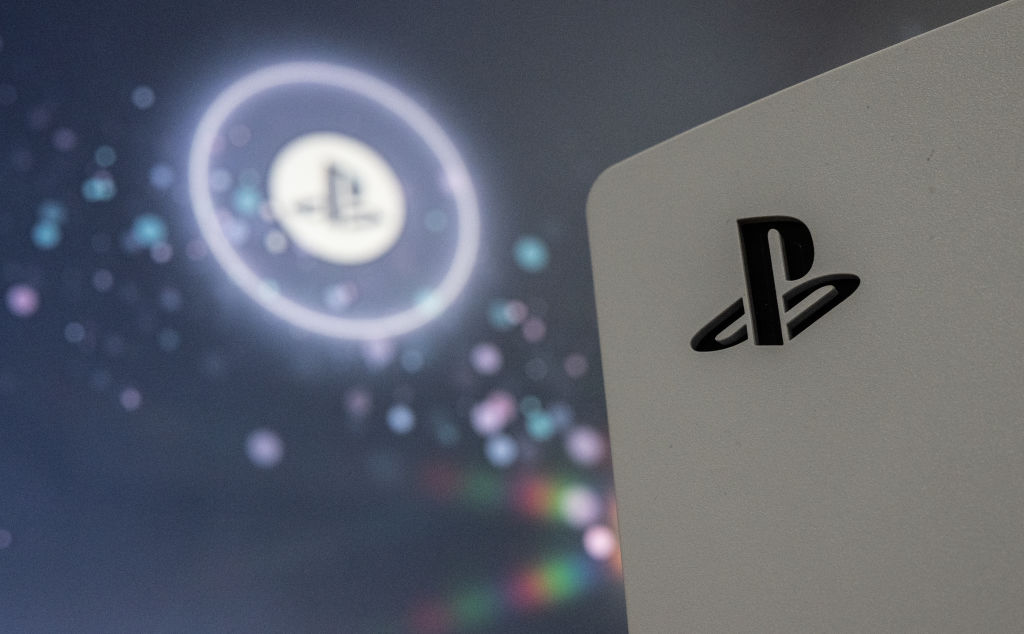tech
Page: 20
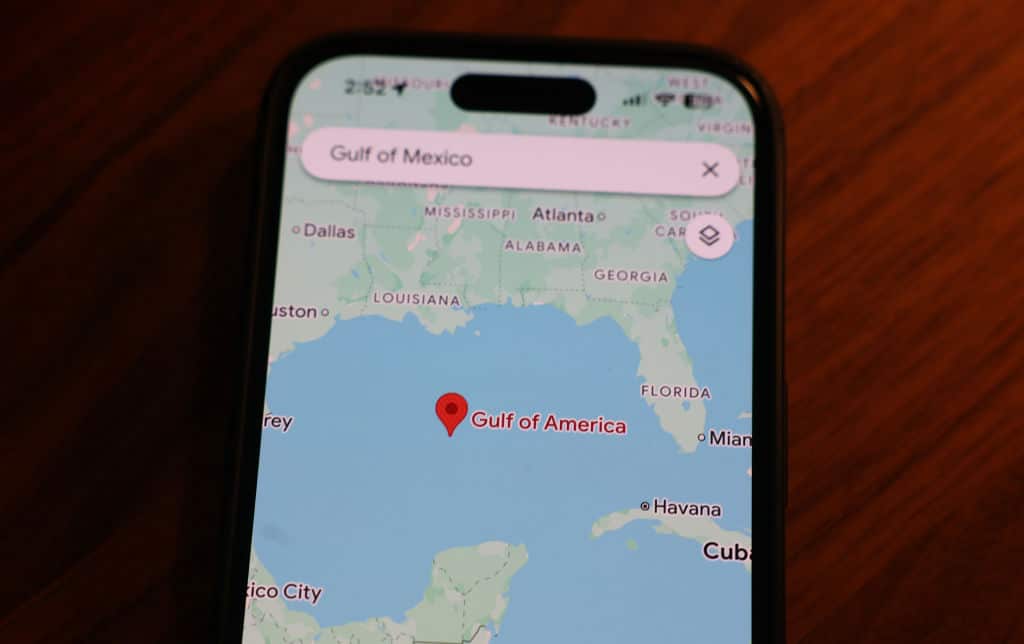
HipHopWired Featured Video
CLOSE
Source: Justin Sullivan / Getty / Google
Like when Elon Musk stupidly changed Twitter’s name to X, Google is doing the same for Donald Trump and has officially renamed the Gulf of Mexico to the “Gulf of America” for US users to see.
We’re still gonna call it the Gulf of Mexico; just saying.
Google has officially capitulated to Orange Mussolini’s dumb executive order calling for the name change of the Gulf of Mexico to be now called the Gulf of America.
According to a blog post, Google claims it made the move because Trump’s ridiculous administration has already updated the Geographic Names Information System (GNIS), which ultimately decides the “federal and national standard for geographic nomenclature.”
Google claims it has a longstanding policy of waiting for government resources to be updated before applying name changes, even though Trump signed the executive order renaming the body of water in January.
Hilariously, it’s not a complete name change. The Gulf of Mexico will only be visible to US Google Maps users. People in Mexico will still see the Gulf of Mexico, and people in other countries will see it specifically (Gulf of America).
Also, Trump ordered the Denali, the highest mountain peak in the United States, to be renamed Mount McKinley. Why, you ask? We are pretty sure it has everything to do with Barack Obama renaming the mountain in 2015 as a symbolic gesture to Alaska natives. So yeah, Trump is just doing this because he doesn’t like Obama.
After checking the map, we noticed that the location is still referred to as Denali.
Users On X Are Sounding Off On Stupid Name Change
Social media is clowning the name change because it’s just another one of Trump’s stupid stunts to take the focus off the real promises like lowering grocery and egg prices, things he already admitted weren’t top priorities for him.
“This petty, childish bullshit just serves to embarrass our nation on the world stage. It makes us look as stupid, weak, arrogant and petulant as the worst stereotypes about Americans globally,” one user wrote in response to The White House’s post showing the name change on the map.
Another user accurately asked, “And this is supposed to help Americans how?”
Welp.
You can see more reactions in the gallery below.
1. Same sis, same
3. At this point Idiocracy was a work of non-fiction
4. Eggxactly
5. Pretty much
7. This is what the MAGA cult wanted
9. Damn Google
11. Gulf of America Day?
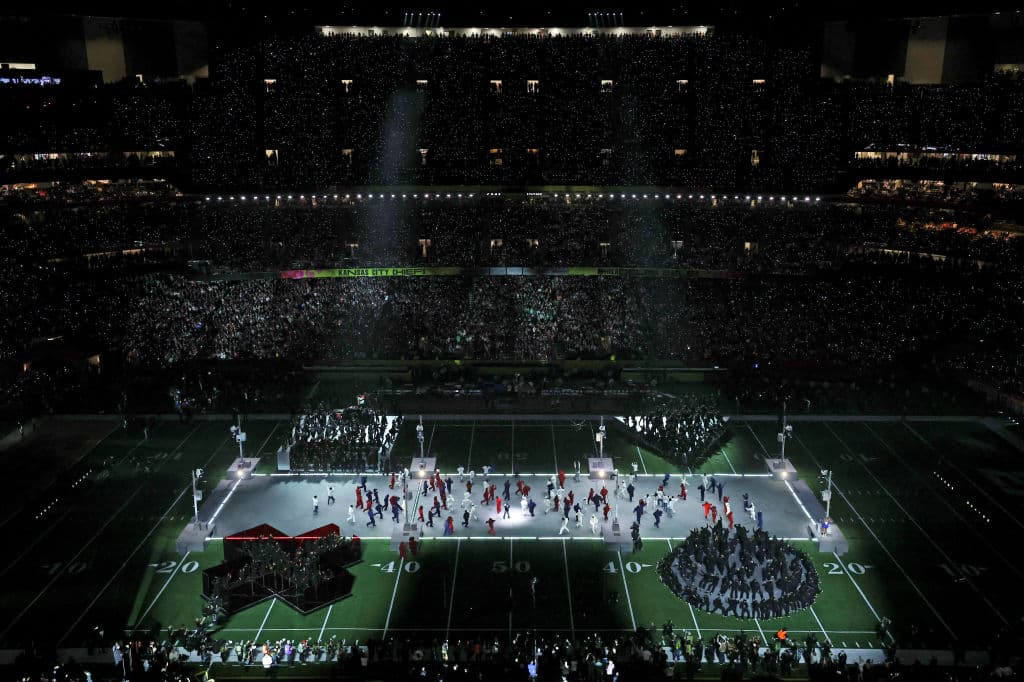
HipHopWired Featured Video
CLOSE
Source: Patrick Smith / Getty / Kendrick Lamar / PlayStation
Kendrick Lamar’s Super Bowl LIX halftime performance had more easter eggs than a Marvel Studios film. One in particular caught the attention of gamers who were tuned in.
You were absolutely correct if you thought Kendrick Lamar’s performance had a video gamey-feel. Super Bowl LIX halftime show art director Shelley Rodgers confirmed to Wired that Lamar uses PlayStation imagery, mainly the icons on the PlayStation controller.
In the interview, Rodgers revealed that K.Dot devised the video game-themed performance, adding that “each performance space was shaped like a button on a PlayStation-style controller, a performance intended to portray Lamar’s life as a video game.”
No one knows why Lamar chose PlayStation or decided to go that route while he bullied Drake again, but the art director did have some suggestions.
“I think the was symbolic, his way to reach young people,” Rodgers told Wired. “A lot of it is showing his journey, [showing him] traveling through the American dream.”
Creative Director Mike Carson added more insight, adding that Lamar and his production company, pgLang, are “really into keeping things clean and minimal.”
“We went with a monochromatic concrete look and allowed the video game motif to come alive through dialogue, lighting, choreography, and music.”
There is no word on whether PlayStation knew about Lamar’s vision, but if they did, do you think Drake would also be BIG MAD at the video company for being involved, or nah?
Fans Loved The PlayStation Inclusion
Fans also had plenty to say about the moment. “Kendrick Lamar brought out the PlayStation symbols and said,’ Game Over,’” one user on X, formerly Twitter, wrote following the performance.
Another user added, “Serena Williams, Samuel Jackson, PlayStation references, the GNX, the whole stadium yelling “AMINORR” ugh the dancers in red, white & blue, SZA?! Thank you Kendrick. The revolution will be televised.”
Kendrick Lamar did that! Debate your auntie.
You can see more reactions in the gallery below.
4. Still need an answer
6. So cool
HipHopWired Featured Video
Source: Kenstocker / Getty / FBI
Does anyone else feel phone scams have been out of control since Donald Trump got back into office? Anyway, the FBI, or what’s left of them, is now warning iPhone and Android users about a scam that could make your life hell if you fall for it.
The FBI warned about a scam involving text messages demanding recipients pay unpaid road tolls. According to Forbes, anyone who receives such messages should delete them immediately.
“Scammers are pretending to be tolling agencies from coast to coast and sending texts demanding money,” the FTC said, as reported by Forbes. “Not only is the scammer trying to steal your money, but if you click the link, they could get your personal info (like your driver’s license number) — and even steal your identity.”
The devious texts contain a dollar amount and a link to pay the fake fine, which comes from an unknown individual pretending to be a local agency.
How Long Has This Been Going On?
According to Forbes, people from Massachusetts, California, North and South Carolina, Illinois, Colorado, Florida, and several other states have claimed they received the texts in January. The FBI claims reports about the scam started surfacing around March 2024, and thousands of people have since “reported smishing texts representing road toll collection services.”
Those texts “claim the recipient owes money for unpaid tolls and contain almost identical language.”
“The ‘outstanding toll amount’ is similar… However, the link provided within the text is created to impersonate the state’s toll service name, and phone numbers appear to change between states,” the FBI said.
The city of Great Falls, Montana, recently posted on X, formerly Twitter, to warn residents about the scam.
https://x.com/City_GreatFalls/status/1887648646348611829
We have a feeling things are only going to get worse as Trump continues to gut everything in the name of “government efficiency.”
Last October, Tyler Brown and Harold Serero launched the independent label Heatwave Records. A few short months later, the company accounted for three of the top five records on Spotify in Nigeria for part of January: Fido’s “Joy Is Coming” and “Awolowo,” along with Kvng Vinci and Zerrdyl’s “Hausapiano” remix.
In the past, ambitious executives might have stayed inside a major label or management company for most of their careers. (Brown used to work as managing director of Syco Music, while Serero was an A&R executive at Ultra Music Publishing.) But more and more, they’re stepping out to start their own operations, pursuing a path that offers not just more freedom, but more potential upside if they catch a hit.
Still, running a record label is not easy, and all these fledgling operations would once have turned to more traditional record companies for the resources, back-end infrastructure, and promotional support that are required for success. These days, however, many of them have decided that partnering with a major is no longer necessary. And recently, a number of them are turning to a relative newcomer, the distribution company Too Lost, for those services.
Trending on Billboard
“We’ve beaten major labels to deals because of how quickly we move once we’ve discovered something,” Heatwave’s Brown says. “We aim to get that deal done within 24 hours. Too Lost backs us charging after these records and supports us fully — not only from an administrative point of view, but financially and in terms of manpower.”
Co-founded by Greg Hirschhorn, 26, Bjarki Larusson, 29, and Alex Silverstein, 27, Too Lost has grown rapidly since launching publicly at the end of 2020. More than 300,000 labels and artists — including established names like Chief Keef, Lil Tjay, YG and Ye — now distribute music through the platform, and its annualized gross revenue, based on the fourth quarter of 2024, was $56.1 million. The company’s emergence has helped enliven digital distribution, an absolutely necessary but resolutely unglamorous sector of the industry that seemed fairly settled just a few years ago.
At the most basic level, digital distribution companies provide artists with a technology service: the capability to upload their songs to streaming services and other digital stores around the world. Artists already had myriad options before Too Lost made its debut. The DIY side of the market — which is often hobbyists who make music for fun and push it to streamers for a low flat fee — relied on stalwarts like DistroKid and TuneCore. More commercially successful acts often found a home at long-running major-label-owned alternatives like The Orchard or ADA.
The distribution landscape “definitely was saturated,” says Connor Lawrence, COO of indify, a platform which helps pair emerging talent with financial and marketing resources. “But there are so many artists out there, I think if you deliver a good product, people will gravitate towards it.” He likens Too Lost’s appearance and upward trajectory to that of canned water company Liquid Death: There were more than enough water brands around in 2019, but Liquid Death launched and became wildly popular anyway. (Too Lost is an investor in indify.)
Hirschhorn, Too Lost’s CEO, prefers a coffee analogy. “There’s Starbucks, there’s Dunkin’, but you can be Blank Street,” which was established in 2020, he says. “You can still build a great coffee business, even in an ecosystem where there’s already existing competition. You need to execute differently, and you need to really emphasize what makes you stand out.”
Unlike many of its competitors, Too Lost aims to help both the DIY side of the market and successful artists who have achieved name recognition and charting hits. (Most distributors focus on one camp or the other.) Too Lost delivers music to, and provides analytics from, a number of streamers and digital stores that other distributors don’t always reach, including FLO and Melon in South Korea, AWA in Japan, or the exercise company Peloton, providing independent artists with more chances to earn revenue, and more opportunities to learn about their listeners.
Too Lost also has a publishing administration option, so artists don’t have to go to another platform to earn songwriting income; a block list function, which will automatically strike an artist’s track if it’s uploaded to Twitch or SoundCloud by a third party; and a breezy catalog ingestion tool, which lessens the technical headaches caused by moving music from one distributor to another. Artist collaborators can easily create free accounts just to receive royalties from projects they worked on — a featured artist might use this if their duet partner is on Too Lost, for example — even if they distribute elsewhere.
“My idea was always to capture market share by just building a very frictionless product,” Hirschhorn says. “People then build loyalty to something that fundamentally just works.”
Too Lost has started to take deals away from established competitors, and that fact, combined with Hirschhorn’s boyish demeanor — his old Instagram picture was Matthew Broderick in Ferris Bueller’s Day Off — has sparked skepticism in the music industry. “Other distributors aren’t the biggest fans” of Too Lost, Lawrence acknowledges. “That means that they must be doing something right.”
***
On a Tuesday in December, Laurent Hubert, CEO of the publishing company Kobalt, stopped by the Too Lost offices in Manhattan to meet Hirschhorn in person for the first time. Too Lost added its publishing administration option at the end of 2022 to provide distribution clients with a way to take home songwriting income. Over the last two quarters, that part of the business has grown from generating $200,000 in net revenue to $1 million.
Too Lost currently partners with BMG to collect publishing. (Coincidentally, while Hubert was visiting the office, BMG sent over cupcakes to celebrate the Too Lost founders’ appearance on Forbes‘ latest 30 Under 30 list.) Still, Hubert was interested in learning more about the new company on the block. The result was a genial CEO sparring session, heavy on economic jargon, that ranged from the cost of office leases in Manhattan to the bloated executive salaries at the major labels to the increasing importance of catalog.
The first time Lawrence got on a Zoom with Hirschhorn, he remembers the Too Lost co-founder “speaking a million miles an hour.” (“I ramble,” Hirschhorn says at one point, chalking up some of his conversational velocity to the military-grade cold brew in the Too Lost office.) While chatting with Hubert in December, Hirschhorn sometimes fired off a new idea before the Kobalt boss finished a thought.
But Hubert held his own. He has a gift for distilling economic wisdom into pithy manifestos — “We must crush the majors on cost of capital!” — and slick catchphrases: “We build businesses on trend lines, not headlines.” “I might have to steal that one,” Hirschhorn says later.In a way, he already has. Because Too Lost was a late entrant in the distribution landscape — TuneCore and DistroKid, for example, are both well over a decade old — Hirschhorn says he was able to survey the available options and see what was working, and what wasn’t. His goal was to build “a DIY distribution service that could also service the upper middle class of artists.”
Historically, that has been tough to achieve. Several distributors abandoned the DIY side of the market — a low-margin volume game that comes with common headaches like streaming fraud and copyright infringement — to focus strictly on higher-performing clients, where they can take a cut of royalty income. And the distributors that do offer DIY services often lose clients once their songs start performing well: Wealthier competitors or major labels lure them away by offering a large advance or more personalized help with their careers.
Part of the reason it’s tough to cater to the DIY artist market and the “upper middle class” simultaneously is that their needs are fundamentally different. Hobbyists just need basic functionality, the ability to get their songs on a streaming service and ensure that royalties from any subsequent streams flow back to their bank account. But the upper middle class might want advance funding for their next album, help protecting a viral song from bad-faith takedowns, access to Spotify’s Discovery Mode program, or marketing money to fan the flames of a TikTok trend emerging in Indonesia, for example.
Nevertheless, Hirschhorn set out to satisfy both constituencies. He started working on Too Lost in earnest during the first months of the pandemic, putting $25,000 of his own money into the company. (Hirschhorn started a record label and sold it to Sony as a teen, leaving him some funds to play with.) “It was the first year I could grow a beard, and I grew a full beard,” he recalls. Subsisting largely on Chinese takeout, he gained weight.
Hirschhorn met Silverstein, who was working at +1 Records, through a mutual friend and convinced him to join up as a co-founder, offering a chance to be his own boss. (For a while, Silverstein slept on the couch in Hirschhorn’s midtown one-bedroom apartment.) Larusson was working as a freelance data scientist before he came aboard as chief technical officer.
While many companies call themselves distributors, they often rely on a third party like FUGA and AudioSalad to provide the digital “pipes” that beam music to streaming services. Choosing to provide services and outsource the distribution work means these outfits have to give FUGA or AudioSalad a cut of their earnings, reducing already thin margins. But this way, anyone can launch a distribution offering quickly and then focus on building a profile in a crowded marketplace — often by signing prominent artists.
For many distributors, “It’s less about, ‘Let’s build this out,’ and more about, ‘Let’s raise a lot of money and go do a lot of deals,’” Hirschhorn says. “I’m a true believer that distribution is a technology business, not a music business.”
As a result, Too Lost “built without dependency on any partners,” guided in part by Larusson, who had a computer science background and worked as an engineer on projects for banks, among other endeavors. The founders even built their own payment processing engine, so they didn’t have to pay fees to third parties for financial transactions.
“Greg was late to the game,” notes Josh Feshbach, who manages the singer Pink Sweat$ and works frequently with Too Lost. “What he did better than anyone was understand how today’s DIY artist operates and how they need to run their business. Then he basically tried to put every piece of functionality they would possibly rely on into one platform” — analytics for more than 15 streaming services, funding for advances, copyright registration, publishing administration, cover song licensing, Spotify Discovery Mode access, royalty splitting, reports on songs’ usage on social media, and more.
And it all comes on the cheap: The basic Too Lost account costs $19.99 a year. (For comparison’s sake, it’s $22.99 on DistroKid and TuneCore, though those companies are still much bigger than Too Lost). A label can sign up for an account for just $35.99 a year.
“You can run your entire business from Too Lost’s dashboard,” Feshbach says.
***
Two days after the Kobalt meeting, Hirschhorn rolled into the office fashionably late, a little rough around the edges. While it was an especially festive week for him — an event celebrating Forbes‘ 30 Under 30 inductees, Too Lost’s holiday party — he says he’s usually a homebody: “I put sweatpants on after work. I watch Netflix or answer emails from my couch with a blanket over me.”
But the previous night, Leon Morabia, an attorney at Mark Music & Media Law, had invited Hirschhorn to the firm’s East Coast holiday party, which didn’t start until 10:30 pm. Ron Perry, chairman/CEO of Columbia Records, and Tyler Arnold, president of Mercury Records, had both made appearances. “It was a very impressive group of folks,” Hirschhorn says. “I was like, ‘Well done. I can barely get these guys in a room one on one.’”
Early in 2024, Morabia had reached out to Corey Goldglit, Too Lost’s manager of A&R, to discuss one of his clients, the rapper Ayesha Erotica. “She had a lot of infringement” around her catalog, according to Goldglit — imposters were ripping her songs, uploading them and pocketing royalties from the plays they earned.
Too Lost worked to take down the pirated versions of Erotica’s songs and ensure her royalty income flowed properly to her artist account without even asking for up-front payment. “I’ve never seen it in the music business — someone said, ‘Let me just do this thing for you, and then we’ll take it from there,’” Morabia says. “Usually it’s, ‘Sign your life away here, and then we’ll underdeliver on our promise.’”
Erotica is now earning more than 9 million streams a week on Spotify alone. “She’d never seen a check off her music,” Goldglit says. “Now she’s seeing a lot of money.” She has since signed an official deal with Too Lost, and her team liked the company enough that they recommended it to another act who is now close to signing a deal.
As artists like Ayesha Erotica get bigger, Too Lost’s ability to hold on to them will be a test. But Hirschhorn is confident that, as long as his platform remains versatile, current and easy to use, even artists that choose to go elsewhere will eventually return to the fold.
“You might not always bank with Chase, but you’re not going to get rid of your Chase account,” he reasons. “They might leave to do a project with a major, but they’re going to come back, or they’ll keep their back catalog with us.”
***
Too Lost has been able to win some deals by undercutting competitors, not only on pricing, but on distribution rates — offering to take a 5% cut, for example, when competitors are asking for twice as much. Several executives at rival companies, speaking on the condition of anonymity, believe that this strategy is not sustainable in the long run. And these executives did not understand how Too Lost could be making money.
Feshbach offers a blunt rebuttal. “The people that say there’s no way Too Lost is making any money are just stupid,” he says. “Does [Too Lost] do some deals that I wouldn’t do in order to get people on platform? Sure. But in the long run, they’re weighing these decisions against all of their different revenue streams.”
Too Lost makes money from subscriptions, royalties from distribution deals with bigger clients, and data deals with consumer research companies, according to Hirschhorn. The average customer spends $8 a month between a subscription and other add-on services like cover song licensing, copyright registration and usage discovery, which shows where tracks are being played on various social media services. The company’s adjusted EBITDA for 2024 was $6.5 million.
beatBread, an artist funding platform, has pumped “tens of millions” into Too Lost artists. “I’d like to think that that has at least something to do with their growth,” says Peter Sinclair, the company’s founder, who spent five years at Universal Music Group before founding beatBread. “A lot of guys win deals by promising dream fulfillment,” he continues. “That is expensive. You need fancy offices, a big A&R force. To really focus on the digital nuts and bolts of something [like Too Lost does] can be cheaper. And I think that word is what drives some resentment.”
Too Lost is now in the process of raising $20 million to $40 million, capitalizing on a moment when both investors and major music companies are looking to snap up pieces of the independent distribution market. “I have been working off our balance sheet historically [to do deals], which has a ceiling,” Hirschhorn says. “I’ve had to turn down a lot of amazing opportunities just due to a lack of available capital.” He hopes that raising money will provide extra ammunition to win competitive deals.
Separately, Too Lost might also indirectly benefit from Virgin Music Group’s recent acquisition of Downtown Music Holdings, FUGA’s parent company. Some artists and labels still want to build their businesses outside of the major label systems. If they no longer see FUGA as an option because Virgin is part of Universal Music Group, they will search for other independent distribution companies to partner with, including Too Lost.
The majors “convince artists they’re going to become stars,” Hirschhorn says. But “when they don’t become stars, they still have a catalog making a lot of money every year.”
At that point, he’s making a bet: “Artists are gonna think, I’d rather manage my catalog with those guys over at Too Lost than with the guy who said he’s going to put me on Jimmy Kimmel.”
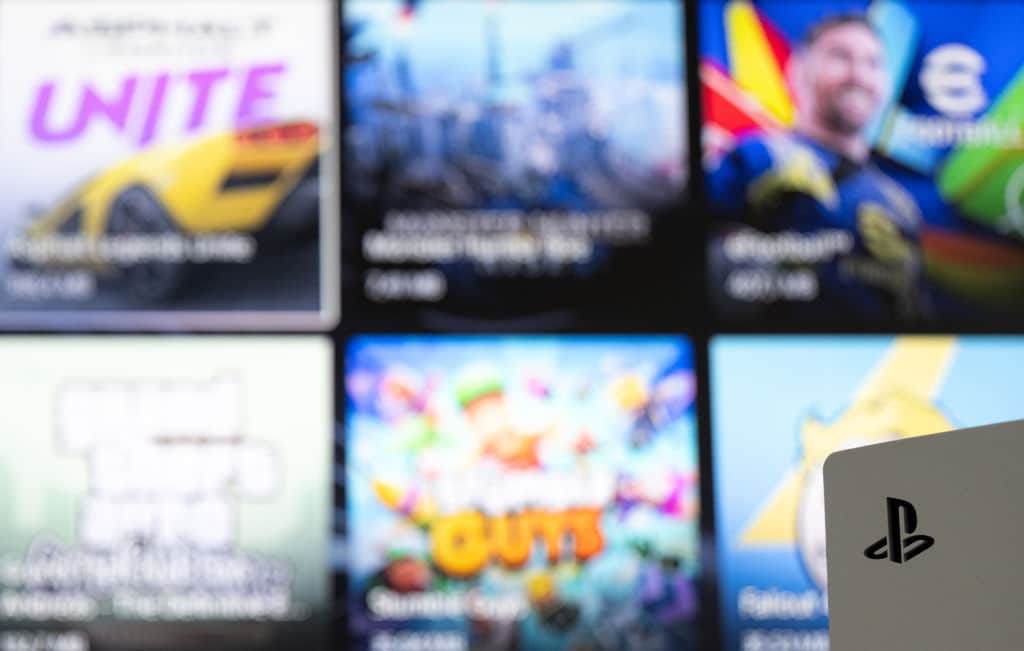
HipHopWired Featured Video
CLOSE
Source: Anadolu / Getty / PlayStation
Next to Kansas City Chiefs fans and Drake, no one had a crappier weekend than PlayStation console owners, thanks to a massive service outage. The company finally explained what happened, but gamers were not feeling it.
The AskPlayStation account on X, formerly Twitter, finally broke its silence on the massive service outage that kept PS5 and PS4 owners from playing multiplayer games, games that require online connectivity,y and even some games in their digital library for over 24 hours.
According to PlayStation, the outage that began on Friday, February 7, around 6 p.m. ET and ended at 6:58 p.m. ET on Saturday (February 8) was due to an “operational issue.” To compensate for ruining gamers’ weekends, PlayStation said it would offer subscribers additional days of service at no additional cost.
“Network services have fully recovered from an operational issue. We apologize for the inconvenience and thank the community for their patience. All PlayStation Plus members will automatically receive an additional 5 days of service.”
That’s all they had to say? Hmm
As you can imagine, gamers are not buying what PlayStation is selling, especially the “additional 5 days of service,” because it just feels cheap on their part.
“What was the reason behind Network failure? this is extremely shady and tone deaf communication. I lost my profile back in ps3 hack and this one of the reason why i don’t trust this Brand atleast security wise,” one post on X read in reply to AskPlayStation’s post.
Another post read, “5 days of PlayStation Plus as an apology? That’s like getting a small fry after they mess up your entire order.”
Listen, we understand that there has to be a better explanation for what happened. However, we still believe that it was Elon Musk and Donald Trump’s fault.
You can see more reactions in the gallery below.
7. Interesting
9. Howling
HipHopWired Featured Video
CLOSE
Source: Anadolu / Getty / PSN
Yup, PSN is still down, and nobody at PlayStation is saying a damn thing about it.
Last night, everyone who wanted to play online games on their PS5 and PS4 consoles over the weekend found out that they won’t be able to because the PlayStation Network suffered a massive global service outage.
PSN has been down for over 14 hours, and PlayStation has not shared any details about what is happening. The official PlayStation X account shared a post from the US AskPlayStation account stating, “We are aware some users might be currently experiencing issues with PSN,” and directing gamers to the PlayStation Network service status page only to see red dots across the board signaling PSN is still down,
https://x.com/AskPlayStation/status/1888041723831484682
This outage has been one of the most prolonged outages in recent memory, but it still pales in comparison to the outage of 2011, which saw PSN not function for 23 days following an “external intrusion” that took the service out and saw the private user data of 77 million subscribers be swiped.
While this situation is probably not on that level, it is bad enough that games, specifically ones that require gamers to be online, like Marvel Rivals, have done more talking than PlayStation on the matter.
Per Marvel Rivals:
Due to PlayStation server’s emergent issue today, PlayStation users might have difficulty launching games, apps, or network features. We are actively communicating with the PlayStation team and will restore the game once we receive a solution plan from the PlayStation team.
We apologize for any inconvenience and will notify the community through official channels once the issue is fixed. Thank you for your patience and understanding.
Was PSN Hacked?
Some gamers believe that PSN has been hacked, and that’s why PlayStation is so mum on the situation and is suggesting folks should reset their passwords.
https://x.com/Troydan/status/1888078195934609665
Bruh.
We hope it’s just a PlayStation issue and that the company can get PSN back up and running before the weekend is over. The gallery below shows more reactions on the dire situation for PlayStation owners.
2. Sound adivce
3. Ruh Roh
6. Howling
7. Accurate
8. We have a winner here
9. This is all of us right now
HipHopWired Featured Video
CLOSE
Source: Anadolu / Getty / PlayStation Network
Gamers worldwide are screaming at their televisions because the PlayStation Network (PSN) is experiencing a major outage heading into the weekend when most people play video games.
PlayStation 5 and PS4 owners have taken to social media to voice their displeasure that they cannot connect to Sony’s online services, including multiplayer and the PlayStation Store.
While the US PlayStation account is still silent about the outage, the Ask PlayStation Japan account acknowledged the network’s current struggles in a post on X that Kotaku translated.
“At this time, the PlayStation Network (including PlayStation Store) may not be available,” the announcement reads that was posted at 7:12 p.m. ET on Friday, February 7. “We sincerely apologize for the inconvenience caused to our customers. We are currently investigating the issue and working to restore service, so please be patient.”
PlayStation has yet to provide a reason for the massive outage affecting gamers across the globe. All services are still down if you check the PlayStation status page.
The timing of the outage couldn’t have come at a worse time, with Monster Hunter Wilds currently holding a beta test weekend and Call of Duty having a double XP weekend.
Gamers Are Not Taking This Well
The reactions to the outage are pouring in on X, formerly Twitter. “Xbox mfs taking the chance to say “should’ve gotten an Xbox” while PlayStation network down. B***h f**k you & your shit box,” one post hilariously said.
Comedian Roy Wood Jr. came up with a gem, reminding gamers that there are games with single-player campaigns that do not require an online connection.
Welp.
You can listen to Roy Wood Jr. or turn on one of your Xbox consoles, Nintendo Switch, PC, or Steam Deck. If you don’t have any of those other options, you’ll have to wait this out.
Hit the gallery below for more reactions to the PSN outage.
3. All of us right now
4. Felt this one
5. Uggghhhh

HipHopWired Featured Video
CLOSE
Source: Rockstar Games / Grand Theft Auto 6
Take-Two Interactive is adamant that Grand Theft Auto 6, easily the most anticipated game of all time, is coming out this year.
Take-Two Interactive, the parent company of Rockstar Games, shared its quarterly earnings results for October to December 2024 on Thursday but did not give a concrete release date for GTA 6.
But, the company made sure to reassure gamers that Grand Theft Auto 6 is still on track for it’s Fall 2025 release date. Also noted is that this year will be stacked for Tale-Two Interactive because of other notable releases.
Per Variety:
“We’ve announced a pretty narrow window. So I think our view is that right now, that’s fine,” Take-Two Interactive CEO Strauss Zelnick told Variety Thursday ahead of the video game company’s latest quarterly earnings results release. “And then when it’s appropriate, of course, Rockstar is going to have more to say.”
What has moved since the last time Take-Two reported earnings is the release date for “Borderlands 4,” which has switched from a slot in the company’s fiscal year 2026 (April 1, 2025-March 31, 2026) to within calendar 2025. On that front, Zelnick says “you will have a date soon, and then all will become clear,” in regards to how the title will slot in around “Mafia: The Old Country” releasing this summer and “GTA 6” coming in the fall.
Zelnick couldn’t contain his excitement, telling the website that the 2025 calendar is Take-Two’s “most extraordinarily exciting release schedule I think we’ve ever had.”
He continued, “Because we have our annualized titles, plus all these sequels coming from 2K, plus our live services, plus ‘Match Factory!’ and other titles from Zynga, plus ‘Borderlands 4,’ ‘Mafia,’ the list continues. So I’m not sure we’ve ever had a more exciting lineup. And of course, our expectations are that that’s going to be reflected in sequential growth and net bookings in Fiscal 26 and 27, as well as new records being set in both of those fiscal years.”
Gamers Are Both Excited & Still Skeptical
As expected with any news around GTA 6, gamers are always excited when they get updates. The energy is a mix of excitement that the game is still coming this year and skepticism that Rockstar Games can deliver on that.
https://x.com/GTASixInfo/status/1887611457841365385
https://x.com/vicious696/status/1887628467090694144
We get it.
Hopefully, this update from Take-Two Interactive means that Rockstar Games has another trailer for GTA 6 ready to release. Until then, you can see more reactions in the trailer below.
1. Heard you killa
3. Have some faith
4. We all did
HipHopWired Featured Video
Source: Konami / Metal Gear Solid Delta: Snake Eater
The PS Store has accidentally revealed when we can expect to experience Operation Snake Eater after accidentally revealing the release date for Metal Gear Solid Delta.
In what many assume was a mistake and possibly confirmed that the rumored February State of Play is indeed happening, the PS Store leaked the August 28, 2025 release date of Metal Gear Solid Delta: Snake Eater and a new trailer and confirmed it would be PS5 Pro Enhanced. However, it’s unclear whether those enhancements will be ready by launch.
https://x.com/DavidBHayter/status/1887574904356413896
According to the PS Store, Metal Gear Solid Delta’s Deluxe Edition will be released on August 25, while the Standard Edition will arrive on August 28. Basically, those who pony up the extra dollars get to play the game three days early.
After some more digging into the leak, players will be happy to learn that the Snake vs. Monkey game mode featured in the original game will be in the remake.
“In this mode, you’ll play as Snake and round up all the escaped apes running amok in each stage!” a description for the mode reads.
https://x.com/Wario64/status/1886796020304220436
Is Hideo Kojima Also Cooking Up Something For The February State of Play?
Even more interesting is that Metal Gear’s creator, Hideo Kojima, has also been stirring the State of Play pot by teasing people that he is back in the lab editing. This has left many wondering if he is cooking up a new trailer for Death Stranding 2: On The Beach or another look at his new tactical espionage game, Physint.
https://x.com/HIDEO_KOJIMA_EN/status/1887104251010404518
We need PlayStation to confirm this State of Play because it has become the company’s worst-kept secret of the month.
The sad part is that the Metal Gear Solid Delta: Snake Eater release date leak is a buzzkill for the presentation, but don’t get it twisted—we are all still excited that this game will be released this year.
HipHopWired Featured Video
Source: Sucker Punch Productions / Ghosts of Yotei / PlayStation
Nintendo announced the Switch 2 very subtly, Xbox had a bomb a** Developer_Direct showcase, and now PlayStation reportedly is gearing up to show us what they got in store for 2025.
Word on the video game streets is that PlayStation is dropping a State of Play broadcast next week. The tip comes from none other than NateTheHate, the same person who accurately called the Nintendo Switch 2 announcement.
In a post on X, formerly Twitter, NateTheHate responded “Yes” when a follower asked, “Is the first State of Play of the year still coming in February?”
When the follower asked if the State of Play was coming either early, mid, or late February, NateTheHate responded, “What does your heart tell you?”
https://x.com/NateTheHate2/status/1885748440132456877
Eurogamer reports that we could expect to see the State of Play sometime around Valentine’s Day and points out that Sony has held a State of Play broadcast every February since 2021.
What Games Will PlayStation Show?
It remains a mystery what games we can expect to see. One good guess is that we will definitely see more of Ghosts of Yotei, the sequel to Ghost of Tsushima, which is slated to arrive sometime this year.
We could also get an update on Insomniac’s Wolverine game, which we haven’t heard anything official about since it was announced during a September 2021 PlayStation Showcase.
Keep in mind that Marvel’s Spider-Man 2 was also announced. The game has come out and was just released on PC last week.
Leaked footage from an early build of the game did hit the web.
We could also see more of Hideo Kojima’s Death Stranding 2 On The Beach or his next Tactical Espionage Action game, Physint.
We’ll just have to wait until PlayStation hits us with the official announcement.

 State Champ Radio
State Champ Radio 
